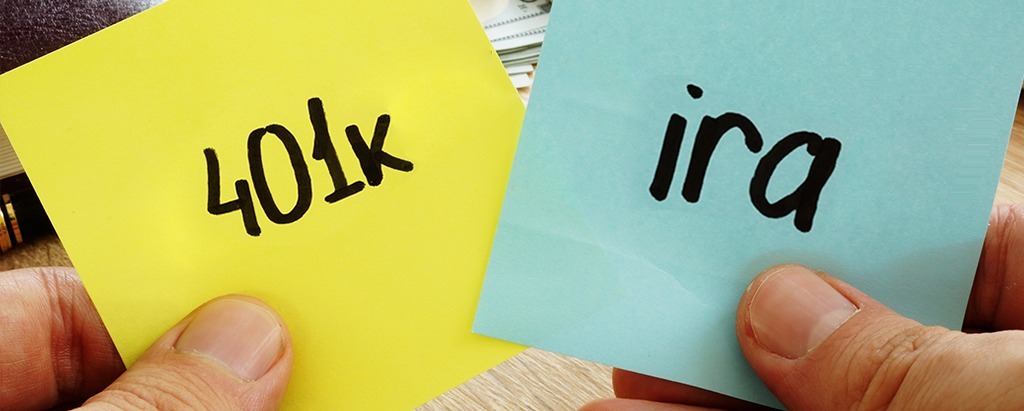
Retirement 401(k) and IRA Contribution Limits for 2025
The IRS announced changes to retirement contribution limits to help workers boost their retirement savings with cost-of-living adjustments.
Whether you’re saving through a 401(k), IRA, or another retirement plan, these updates can help you plan to maximize your contributions and ensure your retirement fund grows over time.
401(k) Retirement Plan Contribution Limits for 2025

401(k)s: The contribution limit has increased to $23,500 in 2025, up from $23,000 in 2024. For workers aged 50 and above, there is no increase in catch-up contribution limits. It remains $7,500 ($31,000 total).
The SECURE 2.0 higher catch-up contribution limit applies for those aged 60-63 starting in 2025. This means participants in that age range may contribute an additional $11,250 instead of $7,500.
Solo 401(k)s: Self-employed individuals with a solo 401(k) can also contribute up to the new 401(k) limit of $23,500, along with catch-up contributions if eligible.
IRA Contribution Limits for 2025

IRAs: The contribution limits for a traditional or Roth IRA remain the same for 2025.
You can contribute a maximum of $7,000 (same as 2024).
Catch-up contributions for taxpayers 50 and older are also subject to cost-of-living adjustments, but these limits remain unchanged for 2025 at $1,000 ($8,000 total).
**You can contribute the maximum for 2024 until Tuesday, April 15, 2025. If you have an IRA, plan now to maximize the contribution limit for 2024 before April next year.
SEP IRAs: Contribution limits for SEPs, or Simplified Employee Pensions, in 2025 is up to $350,000 of compensation and is limited to a maximum annual contribution of $70,000, up from $69,000 in 2024.
SIMPLE IRAs: The individual contribution limit for SIMPLE IRAs will rise to $16,500 in 2025, up from $16,000 in 2024. For employees aged 50 and above, the catch-up contribution remains an extra $3,500, allowing those over 50 to contribute up to a total of $20,000.
For employees aged 60 to 63, an even higher catch-up limit applies. In 2025, this additional catch-up contribution is set at $5,250.
Under SECURE Act 2.0, certain SIMPLE accounts have an increased contribution limit. For 2025, the elevated contribution cap for these accounts is $17,600, with a catch-up option of $3,850 for employees aged 50 and above.
Deductible IRA Phase-outs for 2024

- For singles and heads of household who are covered by a workplace retirement plan, such as a 401(k), and contribute to a traditional IRA, the phase-out range increased to between $79,000 and $89,000, up from between $77,000 and $87,000 in 2024. This means individuals earning over $89,000 won’t qualify for any deduction, while those with incomes between $79,000 and $89,000 may receive a partial deduction.
- For married couples filing jointly, if the spouse making the IRA contribution is covered by a workplace retirement plan, the phase-out range is increased to between $126,000 and $146,000 – up from between $123,000 and $143,000.
- If you contribute to an IRA but are not covered by a workplace retirement plan and are married to someone who is, the phase-out range is increased to between between $236,000 and $246,000, up from between $230,000 and $240,000 last year.
- For a married individual filing a separate return who is covered by a workplace retirement plan, the phase-out range is not subject to an annual cost-of-living adjustment and is between $0 and $10,000.
Remember you can still contribute to an IRA even if you earn too much – it’s just nondeductible.
Roth IRA Phase-outs for 2025

The income phase-out range for the Roth also increases in 2025.
- The income phase-out range for singles and heads of household making contributions to a Roth IRA is increased to between $150,000 and $165,000, up from between $146,000 and $161,000 in 2024.
- For married couples filing jointly, the income phase-out range is increased to between $236,000 and $246,000, up from between $230,000 and $240,000 in 2024.
- The phase-out range for a married individual filing a separate return who makes contributions to a Roth IRA is not subject to an annual cost-of-living adjustment and remains between $0 and $10,000.
Saver’s Credit Limits for 2025

For low and moderate income workers, the new Saver’s Credit (also known as the Retirement Savings Contributions Credit) limit is increasing.
- For married couples filing jointly: The new Saver’s Credit limit is $79,000, up from $76,500 last year.
- For heads of household: The limit is now $59,290, up from $57,375.
- For singles and married couples filing separately: The limit is $39,500, up from $38,250.
Distributions for Domestic Violence Victims

Ordinarily, an early withdrawal from a retirement plan incurs a 10% additional tax (early withdrawal penalty) unless an exception applies.
Under the SECURE Act 2.0, victims of domestic abuse now qualify for an exception. This exception permits withdrawals of up to $10,000 (adjusted annually for inflation) or 50% of the vested accrued benefit in the plan, whichever amount is lower.
For 2025, the limit has increased from $10,000 to $10,300.
Qualified Charitable Distributions (QCD)

With a qualified charitable distribution, you can transfer funds directly from your IRA to a qualifying charity.
This contribution can count toward your required minimum distributions (RMDs) for the year and is excluded from taxable income – no itemization required.
For 2025, the maximum amount you can exclude from your gross income through QCDs has risen to $108,000, an increase from the 2024 limit of $105,000.
Additionally, under SECURE 2.0, there’s a one-time option to make a QCD to a split-interest entity. Originally capped at $50,000, this amount, adjusted for inflation, is now $54,000 in 2025, up from $53,000 in 2024.
Qualified Longevity Annuity Contracts (QLACs)

A QLAC enables you to turn funds from a qualified retirement account, such as a 401(k) or IRA, into an annuity. In 2025, the maximum allowable premium for a QLAC has increased to $210,000, up from the previous $200,000 limit in 2024.








